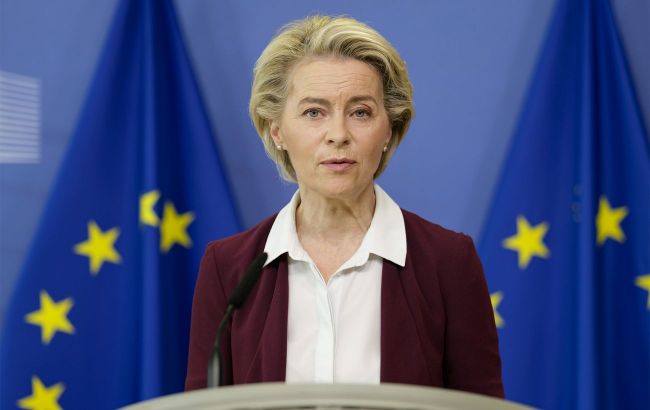Frozen Russian assets: European Commission President reveals details of 'reparations loans'
 Photo: Ursula von der Leyen (GettyImages)
Photo: Ursula von der Leyen (GettyImages)
The EU aims to advance so-called "reparations loans" based on frozen Russian assets, part of which will be used to finance the EU's defense industry, The Guardian reports.
"The loan would not be disbursed in one go, but in tranches and with conditions attached. And we will strengthen our own defence industry by ensuring that part of the loan is used for procurement in Europe and with Europe. Importantly, there is no seizing of the assets. Ukraine has to repay the loan if Russia is paying reparations. The perpetrator must be held responsible," Ursula von der Leyen, European Commission President, stated.
Previously, Ursula von der Leyen reported that the European Commission had agreed with Ukraine to allocate €2 billion for drone production. The funding is intended to help enhance defense capabilities and develop high-tech industries.
Frozen Russian assets
Since Russia's full-scale war against Ukraine began in February 2022, Western countries have imposed broad sanctions on the Russian government, banks, oligarchs, and Kremlin-linked companies. One of the main pressure tools has been freezing Russian assets abroad - from central bank reserves and bank accounts to real estate and other financial instruments.
According to the International Monetary Fund (IMF) estimates and expert analyses, frozen assets in 2024-2025 exceed $300-350 billion. Exact figures are difficult to determine, as some funds are held across multiple jurisdictions.
The EU is discussing the idea of using frozen Russian assets to provide Ukraine with reparations. This loan would only be repaid once Ukraine receives compensation from Russia.
Recently, Reuters reported that Ukraine could receive $300 billion in funding without directly confiscating Russian assets. The money would go toward defense and covering the budget deficit.

